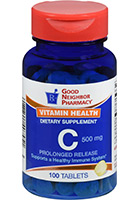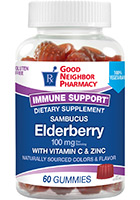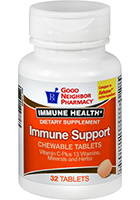December 2025
Vitamin D is a fat-soluble vitamin that your body needs to help absorb calcium, build strong bones, and protect against osteoporosis. Vitamin D also helps strengthen your immune system to help fight off infectious bacteria and viruses.
How do you get vitamin D?
People get vitamin D in four main ways.
- Diet. Vitamin D occurs naturally in a few foods, such as fatty fish (like tuna, salmon, and trout). Small amounts of vitamin D can be found in egg yolks, cheese, and beef liver.
- Fortified foods. Almost all cow’s milk in the U.S. is fortified with vitamin D (roughly 120 IUs per cup). Non-dairy milks (like almond or soy milk) may be fortified, as may some orange juice, breakfast cereals, and margarine. If the product is fortified, you will see vitamin D listed on the nutrition label’s ingredient list, along with the amount.
- Sunlight. When your skin is exposed to direct sunlight (not blocked by clothing or sunscreen), your body will make vitamin D.
- Supplements. Vitamin D can be taken as a single supplement. It’s also commonly found in multivitamins and some other vitamin/mineral combos (like calcium supplements).
How much vitamin D do you need?
According to the National Institutes of Health, children over the age of one and adults up to age 70 need at least 600 IUs (15 mcg) of vitamin D per day. Adults who are 71 years old and older need 800 IUs (20 mcg) per day.
Your doctor may recommend taking more than these amounts if your vitamin D level is low or if you face specific risk factors for vitamin D deficiency. But you should never consume more than 4,000 IUs (100 mcg) per day from all sources combined, which is the safest upper limit for vitamin D consumption. In rare cases, a doctor may recommend a higher dose for a short period to treat a severe deficiency.
Consuming too much vitamin D can be dangerous, causing problems such as nausea and vomiting, dehydration, excessive urination and thirst, or kidney stones. At extremely high levels, vitamin D can lead to an irregular heartbeat, kidney failure, or even death.
Almost all cases of excess vitamin D result from excessive supplementation.
Are you at risk of vitamin D deficiency?
According to the Centers for Disease Control and Prevention, only 67% of people in the U.S. have sufficient levels of vitamin D (50 nmol/L to 125 nmol/L).
The only way to know for sure whether you’re deficient is to have your doctor test your vitamin D level through a blood draw. Here are some common risk factors for vitamin D deficiency.
- Your diet is low in vitamin D. This factor is especially likely to be a problem if you don’t drink milk and don’t consume enough foods fortified with vitamin D.
- You have a malabsorption disorder. If you have a condition that limits your ability to absorb fats, your body is less able to absorb vitamin D (a fat-soluble vitamin) from food and supplements. Malabsorption disorders include celiac disease, ulcerative colitis, and Crohn’s disease.
- You’ve had gastric bypass surgery. Gastric bypass surgery causes the food you eat to “bypass” parts of the stomach and small intestine. But this is where you absorb much of the vitamins and dietary fat needed for your body to use vitamin D.
- You’re taking steroids (like prednisone) or certain weight-loss drugs (like orlistat). These medications can impair your body’s ability to absorb vitamin D.
- You don’t spend much time outside. This factor is especially problematic if you’re an older adult because, as you age, your body experiences a reduced ability to make vitamin D in response to sunlight. In fact, a person in their 70s only produces half as much vitamin D in response to sunlight as someone in their 20s.
- You have dark skin. The more melanin your skin has, the less vitamin D you’ll make when exposed to sunlight.
- You wear sunscreen whenever you’re outside in the sun. This excellent practice will help protect you from developing skin cancer. But it will also significantly reduce the amount of vitamin D your body produces in response to sunlight.







